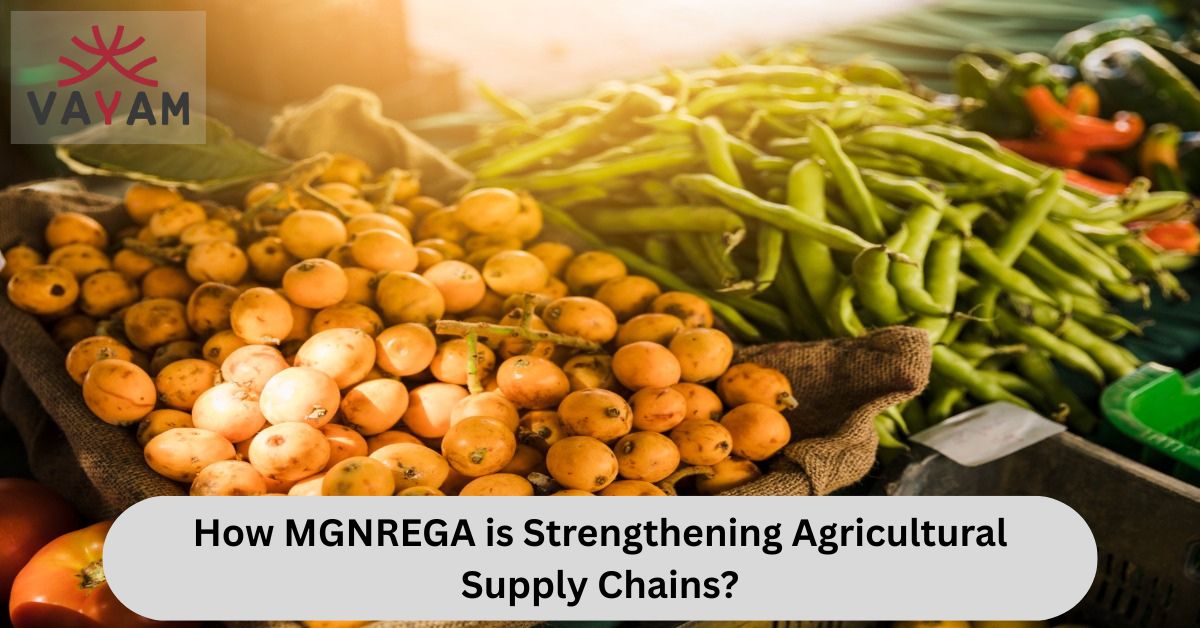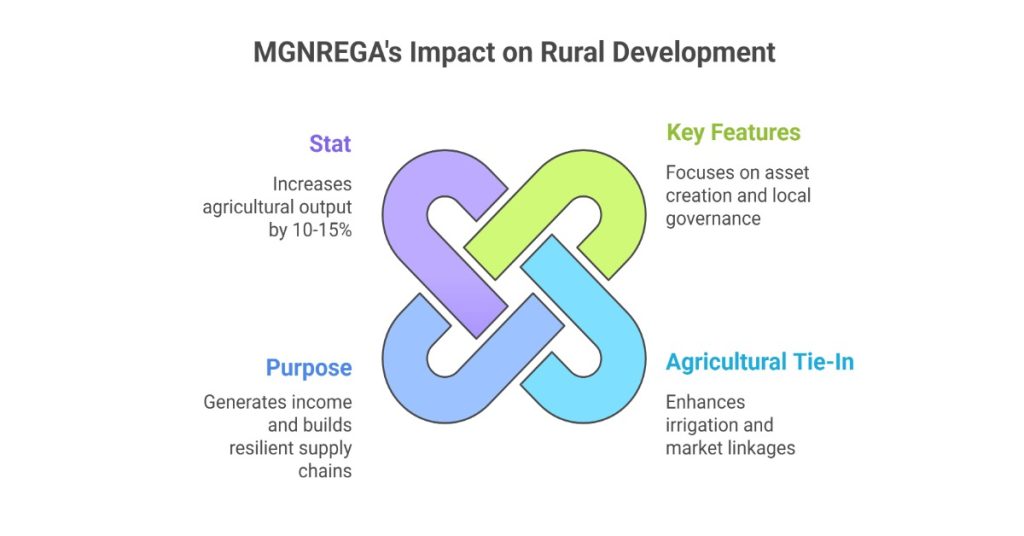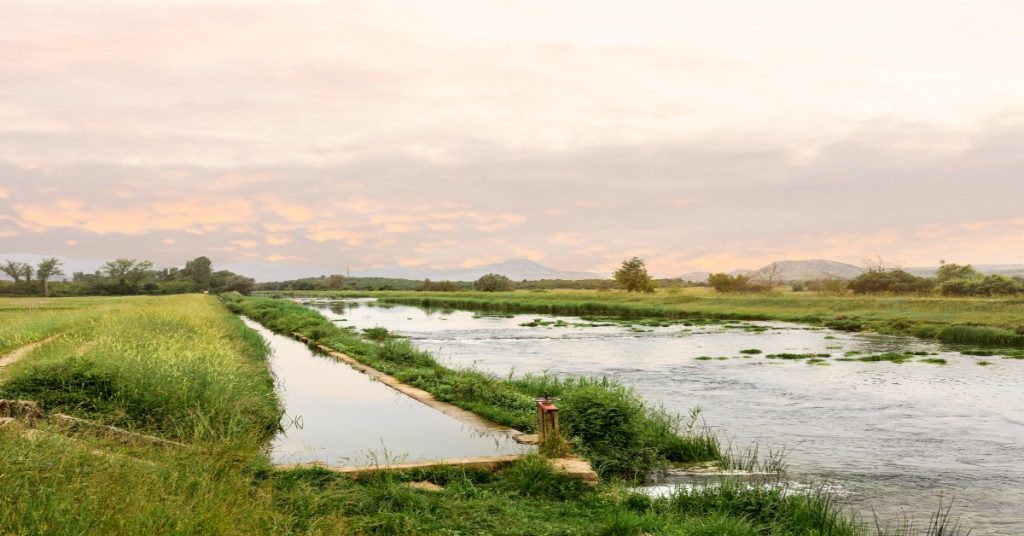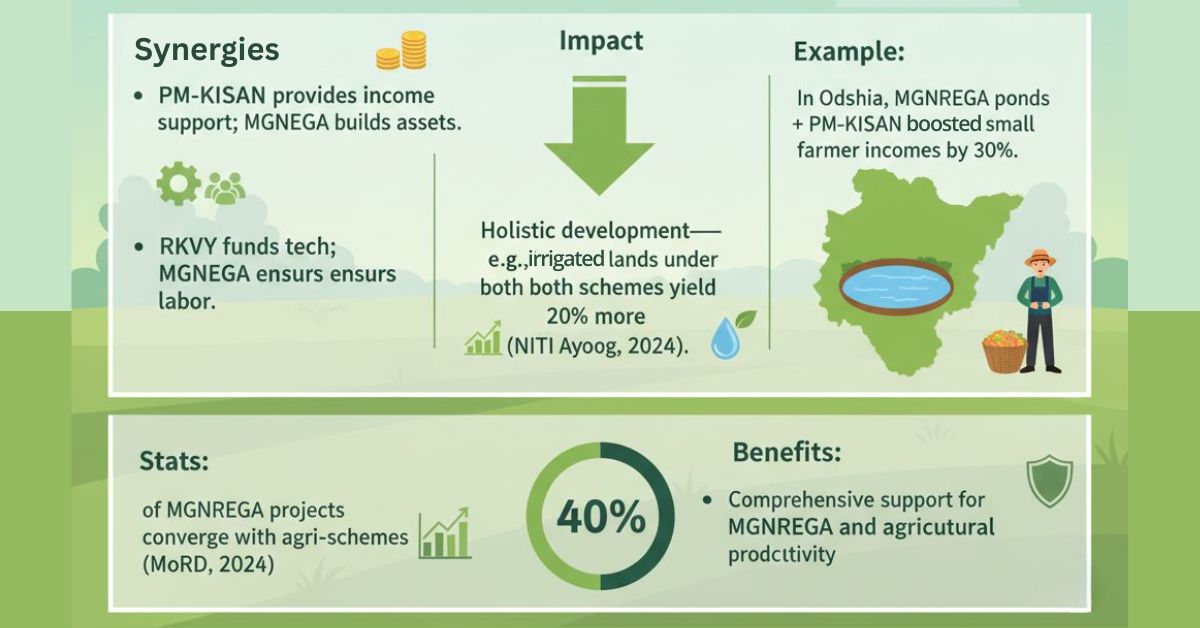
In 2025, the Mahatma Gandhi National Rural Employment Guarantee Act (MGNREGA) is more than a rural employment scheme—it’s a catalyst for transforming India’s agricultural landscape.
By focusing on infrastructure like rural roads and water conservation projects, MGNREGA is improving agricultural market access and boosting agricultural productivity. With 5.5 crore households benefiting in FY24 (Ministry of Rural Development), MGNREGA’s role in reducing rural-urban migration and supporting small farmers is pivotal.
This blog explores how MGNREGA helps small farmers, its impact on post-harvest infrastructure, and its alignment with government schemes for agriculture. Let’s unpack how this scheme is fortifying supply chains and empowering rural India!
What Is MGNREGA and Its Link to Agriculture?
MGNREGA, enacted in 2005, guarantees 100 days of wage employment per year to rural households for unskilled labor. While primarily for employment, its convergence with agriculture has strengthened supply chains by building assets like roads, ponds, and irrigation systems. In 2024-25, over 70 crore person-days of work were generated, with 40% linked to water conservation and rural connectivity (MoRD data).
- Key Features:
- Focuses on asset creation in water, roads, and land development.
- Empowers local governance through Gram Panchayats.
- Targets rural distress, linking employment to sustainable agriculture.
- Agricultural Tie-In: Projects like farm pond construction MGNREGA enhance irrigation, while rural roads improve market linkages.
- Purpose: Generate income (rural employment and farm income) while building resilient supply chains.
- Stat: MGNREGA assets increased agricultural output by 10-15% in participating villages (NITI Aayog, 2024).
Fun Fact: MGNREGA is like rural India’s Swiss Army knife—fixing employment, water woes, and market gaps in one go!

MGNREGA for Rural Roads: Improving Market Access
Rural roads under MGNREGA are a lifeline for agricultural supply chains, connecting farms to markets and reducing post-harvest losses.
- How It Works: Funds construction and maintenance of all-weather roads, enabling farmers to transport produce faster.
- Impact on Supply Chains: Shortens travel time, cuts spoilage (e.g., 20% reduction in vegetable losses, ICRIER 2024), and boosts prices.
- Example: In Bihar’s villages, MGNREGA roads linked 500+ farmers to mandis, increasing income by 25% (MoRD case study).
- Stats: 2.5 lakh km of rural roads built under MGNREGA since 2005, benefiting 5 crore farmers (NITI Aayog).
- Benefits: Improving agricultural market access for perishable goods, empowering small farmers with better bargaining power.
MGNREGA Water Conservation Projects: Boosting Productivity
MGNREGA water conservation projects like check dams and tanks are game-changers for irrigation-dependent agriculture, enhancing agricultural productivity.
- How It Works: Labor-intensive projects harvest rainwater, recharge groundwater, and create reservoirs.
- Impact on Supply Chains: Ensures year-round water for crops, stabilizing yields and supply.
- Example: Rajasthan’s MGNREGA ponds increased groundwater levels by 30%, enabling double cropping and higher farm income (World Bank, 2024).
- Stats: 1.5 crore water structures built, irrigating 10 million hectares (MoRD, 2024).
- Benefits: Supports rural employment and farm income by creating seasonal jobs and reliable harvests for small farmers.
Farm Pond Construction MGNREGA: Enhancing Irrigation
Farm pond construction is a targeted intervention for individual farmers, directly aiding supply chain resilience.
- How It Works: Digging small ponds for rainwater storage, often on private land with community labor.
- Impact on Supply Chains: Provides on-farm irrigation, reducing dependency on erratic monsoons and enabling timely sowing/harvesting.
- Example: In Maharashtra, 50,000+ ponds constructed increased irrigated area by 20%, stabilizing vegetable supply (ICAR, 2024).
- Stats: 2 lakh farm ponds built annually, benefiting 1 crore farmers (NITI Aayog).
- Benefits: MGNREGA helps small farmers by cutting water costs and losses, improving post-harvest infrastructure indirectly through better yields.

How MGNREGA Helps Small Farmers and Rural Employment?
MGNREGA helps small farmers by providing wages during lean seasons and assets that boost farm income, linking employment to productivity.
- Mechanisms:
- Wages fund farm inputs (seeds, tools).
- Assets like ponds and roads enhance land value.
- Impact on Supply Chains: Stabilizes labor supply and produce availability, reducing migration.
- Example: In Uttar Pradesh, MGNREGA workers earned ₹2 lakh extra annually, investing in better farming tech (MoRD, 2024).
- Stats: 50% of MGNREGA workers are small farmers; scheme reduced rural poverty by 32% (World Bank, 2024).
- Benefits: Rural employment and farm income rise, curbing reducing rural-urban migration by 15% in participating areas (NITI Aayog).
MGNREGA Post-Harvest Infrastructure: Reducing Losses
Post-harvest infrastructure like storage sheds and drying platforms minimizes losses, strengthening supply chains.
- How It Works: Builds community-level facilities for storage and processing.
- Impact: Cuts losses from 20-30% to 10%, ensuring steady supply to markets.
- Example: Tamil Nadu’s MGNREGA godowns reduced grain spoilage by 25%, stabilizing prices (ICAR, 2024).
- Stats: 1 lakh post-harvest assets created, benefiting 2 crore farmers (MoRD).
- Benefits: Aligns with government schemes for agriculture like PM-AASHA for better market linkages.
Government Schemes for Agriculture: MGNREGA’s Synergy
MGNREGA synergizes with government schemes for agriculture like PM-KISAN and RKVY to fortify supply chains.
- Synergies:
- PM-KISAN provides income support; MGNREGA builds assets.
- RKVY funds tech; MGNREGA ensures labor.
- Impact: Holistic development—e.g., irrigated lands under both schemes yield 20% more (NITI Aayog, 2024).
- Example: In Odisha, MGNREGA ponds + PM-KISAN boosted small farmer incomes by 30%.
- Stats: 40% of MGNREGA projects converge with agri-schemes (MoRD, 2024).
- Benefits: Comprehensive support for MGNREGA and agricultural productivity.

Reducing Rural-Urban Migration Through MGNREGA
By providing local employment and assets, MGNREGA aids in reducing rural-urban migration, stabilizing rural supply chains.
- How It Works: Wages and improved farming reduce the need to migrate for jobs.
- Impact: Retains rural labor for agriculture, ensuring consistent supply.
- Example: In Bihar, MGNREGA cut migration by 20%, stabilizing farm labor (World Bank, 2024).
- Stats: Migration dropped 15% in MGNREGA-intensive areas (NITI Aayog).
- Benefits: Sustains rural employment and farm income, preventing urban overcrowding.
Challenges and Future Outlook
Despite successes, challenges persist:
- Implementation Gaps: Corruption and delays affect 20% of projects (CAG, 2024).
- Climate Risks: Water projects need resilience to droughts.
- Funding: Budget constraints limit scale (₹86,000 crore allocated for FY25, MoRD).
Solutions: Digital monitoring (e.g., Aadhaar-linked payments) and convergence with schemes like Jal Jeevan Mission. In 2025, MGNREGA’s focus on climate-resilient assets could boost productivity by 10-15% (NITI Aayog projections).
Real Example: Andhra Pradesh’s digital MGNREGA portal reduced leakages by 25%, enhancing trust and efficiency.
Read More
How to Conduct Surveys to Improve MGNREGA Effectiveness: A Comprehensive Guide
Understanding Role of Panchayats in MGNREGA Implementation
The Environmental Impact of MGNREGA: Building Sustainable Communities
Wrapping It Up
MGNREGA is revolutionizing agricultural supply chains in 2025, from rural roads improving access to water conservation projects boosting productivity. By helping small farmers, building post-harvest infrastructure, and synergizing with government schemes for agriculture, it’s reducing rural-urban migration and enhancing rural employment and farm income. As India aims for self-reliance, MGNREGA’s role in agricultural productivity is indispensable.
